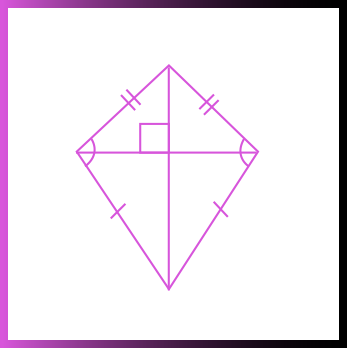Trapezoids and Kites
What special characteristics do trapezoids and kites have?
Goal:
Goal:
The last two quadrilaterals we will look at are trapezoids and kites. Work through the activity below to learn more about these common quadrilaterals.
First, take a look at each shape below. Use what you have learned about mathematical symbols to determine what characteristics each shape has that makes it easy to identify.


What symbols do you notice on each shape?
What do these symbols tell you about these shapes?
| Your Responses | Sample Answers |
|---|---|
| You’re on the right track! Keep reading to find out more. | |
| You’re on the right track! Keep reading to find out more. | |
Now that you have had a chance to examine each shape and share your thoughts, click each tab below to learn more about these special quadrilaterals.

- The trapezoid on the left represents any trapezoid. The trapezoid on the right is special type called an isosceles trapezoid.
- The trapezoid has one pair of opposite sides that are parallel. These sides are marked with arrows.
- In an isosceles trapezoid, the sides that are not parallel are congruent. Also, the angles that come from the parallel sides are congruent. These are marked on the image above.
